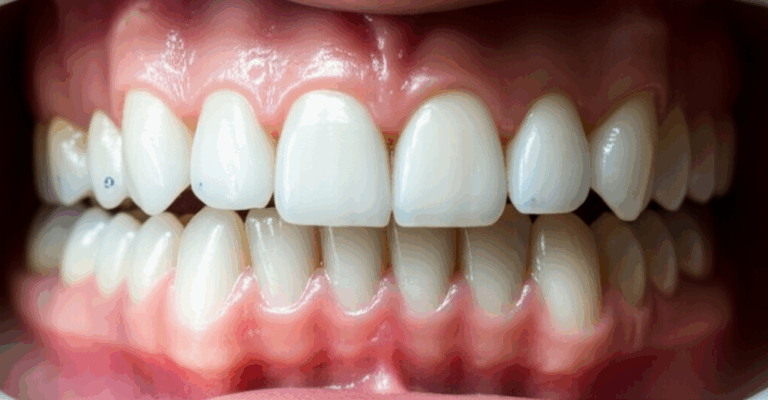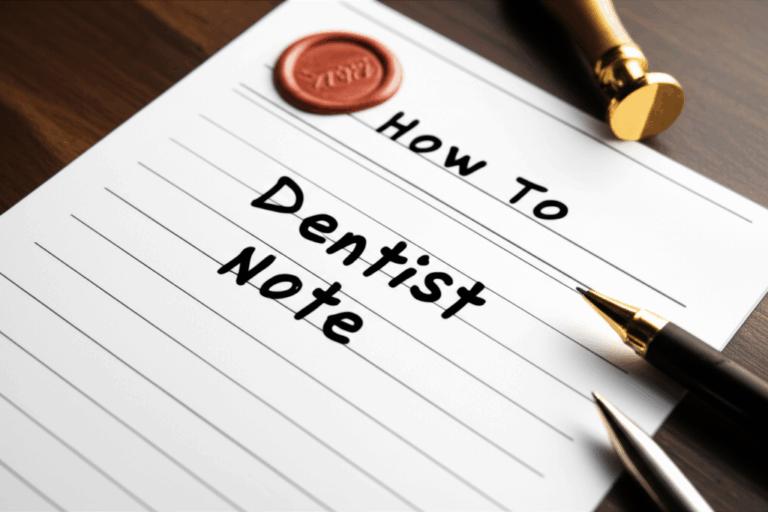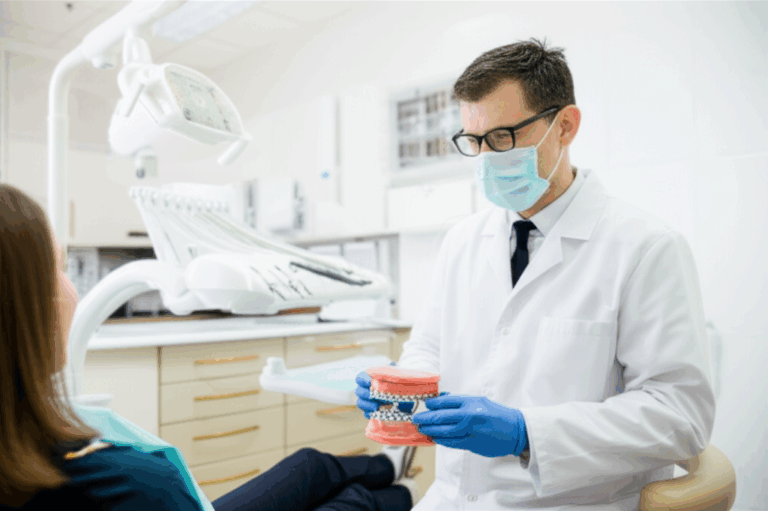
How to Get a Dentist Degree: A Simple Guide
Have you ever watched your dentist fix your tooth and wondered, “How do you actually become a dentist?” It’s a common question, and many people dream of working in this job. Whether you’re thinking about your own future or helping someone else, this guide is here to help.
Getting a dentist degree (a DDS or DMD) can look hard at first. There are a lot of steps and you need to stick with it for several years. But don’t worry—I’ll walk you through every stage, from high school to hanging your “Dr.” sign, in plain, simple words.
In This Article
- What Does a Dentist Do?
- DDS vs. DMD: What’s the Difference?
- Step 1: Start in High School
- Step 2: Get Your College Degree (Pre-Dental Years)
- Step 3: Take the DAT Test
- Step 4: How to Apply for Dental School
- Step 5: What Dental School is Really Like
- Step 6: Getting Your License & What Comes After
- How Much Does Dental School Cost?
- Is Being a Dentist Right for You?
- Questions People Ask About Becoming a Dentist
- Conclusion: Your Path to Becoming a Dentist
What Does a Dentist Do?
A dentist doesn’t just drill and fill teeth—they do a lot more:
- Clean and fix teeth and gums
- Find and treat mouth problems, like gum disease or mouth cancer
- Pull teeth, do root canals, and other small surgeries
- Look at x-rays to find problems
- Teach people how to take care of their teeth
- Work with a team to solve bigger dental problems
Some dentists work mostly with kids (pediatric dentists), do braces (orthodontists), focus on root canals (endodontists), or do surgery. Dentists often work with labs, like a digital dental lab, to make crowns, bridges, and dentures.
Why Does Dentistry Matter?
Oral health isn’t just about a nice smile. Mouth problems can make it hard to eat, talk, or even lead to other health issues. Dentists help keep your whole body healthier.
DDS vs. DMD: What’s the Difference?
A lot of people get confused—what’s the difference between a DDS (Doctor of Dental Surgery) and a DMD (Doctor of Dental Medicine)? The answer: There isn’t one. Both mean you went to dental school and passed all your exams. The name just depends on the school you go to.
- DDS was first used in Baltimore,
- DMD is just “Doctor of Dental Medicine” in Latin (Harvard started using it).
Bottom line: Either one lets you become a dentist and get a job.
Step 1: Start in High School
If you want to be a dentist, your path really starts in high school.
Take Science and Math Classes
Focus on biology, chemistry, physics, and math. These classes help you later on.
Get Some Experience
Join science clubs, volunteer at a hospital, or shadow a dentist in your area. Hobbies that use your hands, like playing an instrument or sculpting, can help show you have steady hands.
Get Good Grades
Dental schools look at your grades from a long way back. Good grades now make it easier later.
Try Teamwork and Being a Leader
Dentists work with others every day. Joining clubs, helping organize things, or volunteering are great ways to learn people skills.
Step 2: Get Your College Degree (Pre-Dental Years)
After high school, you need a bachelor’s degree. That’s four years of college. You don’t have to major in science, but you do need certain science classes.
Picking a Major
- Popular: Biology, Chemistry, Biochemistry (these usually have the right classes built in)
- Other Majors: That’s okay too, just make sure to take the science classes you need
Usual Required Classes for Dental School:
- General Chemistry (with lab)
- Organic Chemistry (with lab)
- Biology (with lab)
- Physics (with lab)
- Biochemistry
- Microbiology
- English
- Math (calculus or statistics)
Dental schools usually look for a GPA (grade point average) of 3.5–3.7. Science classes especially are important.
Other Ways to Build Your Application
1. Shadow a Dentist
Watch a dentist work so you can see what the job is really like. Dental schools often like to see about 100 hours or more of shadowing.
2. Volunteer
Help out at clinics, hospitals, or community health events. Showing you care about helping others is important.
3. Try Some Research
This isn’t required but can help if you want to teach or do more academic work someday.
4. Get Involved
Join college clubs or do something outside of school. Dental schools like students who are good with people and take part in their community.
Tip: Write down your experiences. Later, you can use these stories in your essay or interview.
Step 3: Take the DAT Test
Next, you’ll need to take the DAT (Dental Admission Test).
What is the DAT?
This is a big test on science (biology, chemistry, organic chemistry), reading, math, and even puzzles to test your visual skills. Schools look at your Academic Average—aim for 20 or above (out of 30).
How to Study
- Use DAT prep books and online tools
- Take classes or find study guides
- Do a lot of practice questions and tests
- Study for 2–4 months before the real test
Cramming at the last minute usually doesn’t work—regular studying is best.
Step 4: How to Apply for Dental School
After college and the DAT, it’s time to apply.
The AADSAS Application
This is like the “Common App” for dental school. You fill it out once and can send it to several schools.
You’ll need to send:
- College transcripts
- DAT scores
- List of all your classes
- A personal essay
- Volunteer and shadowing information
Writing a Good Personal Statement
Share your story—why do you want to be a dentist? Is there a special experience that inspired you? Be honest, and show your interest.
Tips:
- Be real and specific
- Explain how your experiences made you want this job
- Show you care about people, work hard, and can stick with it
Letters of Recommendation
Ask science teachers, college professors, or dentists you worked with to write you a letter. These show you’re ready for tough classes and show good character.
The Interview
Dental schools talk to you in person or through quick scenario interviews (called MMIs). They want to get to know you off paper.
When To Apply
Most applications open about a year before you want to start school. Applying early helps your chances.
Step 5: What Dental School is Really Like
Once you’re in, dental school is four years long.
What You Learn
Years 1-2:
- Basic science like anatomy and how the body works
- Practice using dental tools and working on plastic teeth or models
Years 3-4:
- Work on real people under supervision
- Try different areas (working with kids, braces, surgery, root canals)
- Learn about digital x-rays, 3D printing, and other new tools
You also need to pass the INBDE (Integrated National Board Dental Examination) before you finish.
Dental schools often work with outside groups, like a crown and bridge lab, to help you learn hands-on.
Student Life
Dental school is tough—expect lots of late nights, hands-on work, and group projects. Don’t forget to make friends and ask for help.
Making friends and meeting mentors will make dental school a lot easier and more fun.
Step 6: Getting Your License & What Comes After
You’ve finished dental school—but you’re not done yet.
State Licensing
To work, every state says you must:
- Pass the INBDE exam
- Pass a hands-on clinical test (usually ADEX)
- Pass a test on local laws and patient privacy
- Complete a background check
Clinical Test: You’ll do dental work, like fillings or cleanings, on real people or on models.
Do You Want to Specialize?
If you want to focus on braces, root canals, surgery, or kids’ teeth, you’ll need to go back for 2–6 more years of extra training. You apply to these “residencies” just like you did for dental school, but now you compete with other dentists.
Starting Your Career
Once you have your license, you can:
- Work in a dental office
- Join a clinic or health center
- Serve in the military
- Start your own office
Lots of dentists also work with a skilled implant dental laboratory for things like dental implants.
How Much Does Dental School Cost?
Dental school isn’t cheap. Here are the basics:
Tuition and Fees
- Public Schools: $35,000–$70,000 a year (if you live in the state)
- Private Schools: $60,000–$90,000+ a year
That means, for four years, school may cost $140,000–$360,000 or even more.
Extra Spending
Don’t forget about money for rent, food, books, health insurance, and things you need for school—about $20,000+ each year.
How Do People Pay?
- Student Loans: Most new dentists have $300,000–$400,000 in loans. It’s a lot, so plan and budget carefully.
- Scholarships: Look for help at your school or special programs (some for minority students, or if you help in certain communities).
- Military Programs: The Army, Navy, and Air Force give scholarships in return for a promise to work for them after school.
- Grants: Some states and the National Health Service Corps help pay back loans or pay you for working in public clinics.
Is Dental School Worth It?
Dentists often earn a good salary—about $160,000–$190,000 a year, with even more for specialties. The job is usually secure, and over time, most dentists feel their investment pays off.
Is Being a Dentist Right for You?
Is being a dentist worth all the work and debt? Here’s what to think about.
The Job Market
- Growth: Expected to grow by about 6–7% over the next ten years
- Jobs: Work in clinics, offices, public health, the military, or teach
Salary
- Regular Dentist: $160,000–$190,000 a year
- Specialists: $250,000–$450,000+
Life Balance
Dentists often have regular hours and, if they want, can own their own office and set their own schedules.
What Makes a Good Dentist?
- Good with your hands and careful with details
- Easy to talk to, caring, and good at calming people down
- Good at solving problems and being patient
- Willing to keep learning (dental tools and treatments change every year!)
Questions People Ask About Becoming a Dentist
Q: Is it hard to get into dental school?
A: Yes—it’s very competitive. You’ll need good grades, a strong DAT score, real shadowing experience, and to show you care about people.
Q: Can I get in with mostly B’s?
A: Some schools do take students with lower grades, especially if you stand out in other ways (great DAT, cool story, or strong recommendations).
Q: What’s daily life like for a dental student?
A: Classes in the morning, lab practice, seeing patients, studying with friends, and lots of coffee!
Q: How is a dentist different from a dental hygienist?
A: Hygienists mostly clean teeth and teach about taking care of teeth. Dentists do surgeries, fill cavities, and handle the bigger dental decisions.
Q: Can you practice in the USA with a dental degree from another country?
A: Yes, but it’s harder. You’ll need to do more schooling or pass special tests.
Q: Is dental school tougher than medical school?
A: Both are tough. Dental school means lots of time working with your hands and on real people. It’s hard in its own way, but not harder or easier than medical school—just different.
Q: What if I don’t get in the first time?
A: That’s common! Many students apply more than once. Try to improve your grades, take more experience, or boost your DAT score.
Conclusion: Your Path to Becoming a Dentist
Here’s a simple breakdown of how to become a dentist:
- Start in high school, focus on science, math, and people skills
- Get your college degree and the right science classes
- Shadow real dentists, volunteer, and learn to work with people
- Do well on the DAT test
- Make a strong application—write a great story, get good letters, and prepare for interviews
- Pass four years in a tough but rewarding dental school
- Pass your state and national tests to get your license
- Choose between general practice or do even more training to specialize
- Start working as a dentist and help people smile and stay healthy
Your Next Steps:
Don’t feel overwhelmed—take one step at a time. Every dentist started right where you are, asking questions and sometimes feeling unsure.
When you’re ready, talk to dentists, college advisors, and visit local offices. Shadow a dentist to see if this job is right for you. And of course, brush and floss—it’s the best way to practice!
This article uses info from the American Dental Association (ADA), American Dental Education Association (ADEA), and the U.S. Bureau of Labor Statistics, and has been checked by a real dentist.
Want more help? Check out our dental practical guide for more easy tips and stories from new dentists.
Your journey to a cool and respected career in dentistry starts now—one science class, shadowing hour, or application at a time. You can do it!
Sources:
- American Dental Association: Becoming a Dentist
- American Dental Education Association: ADEA GoDental
- U.S. Bureau of Labor Statistics: Dentists








